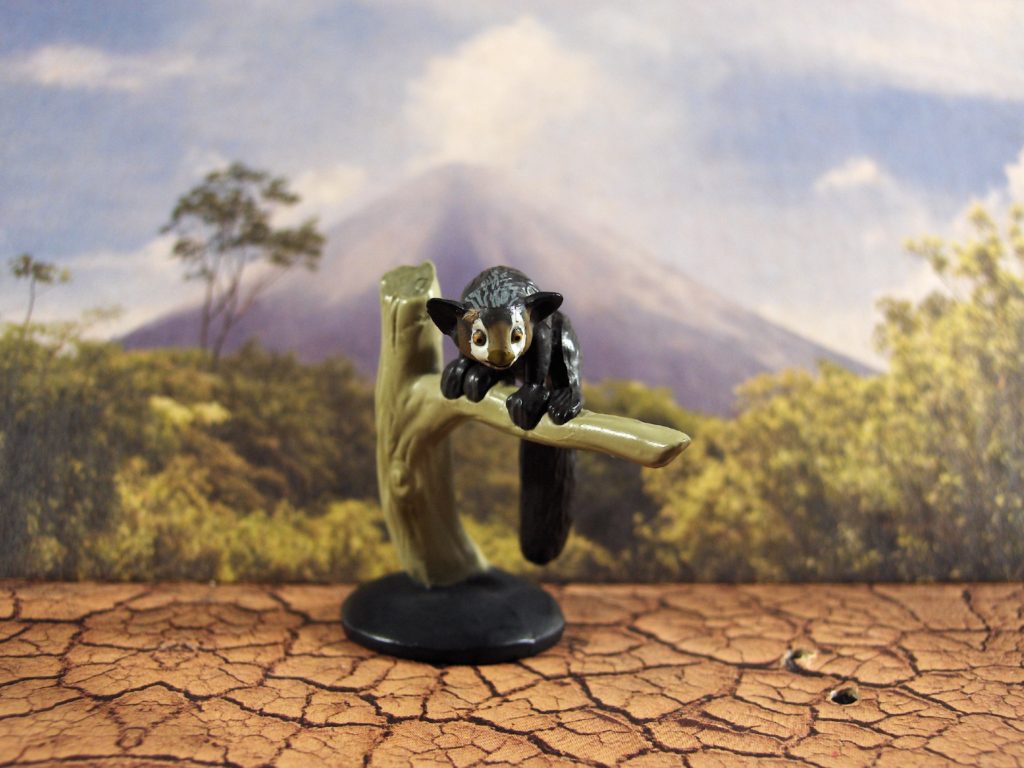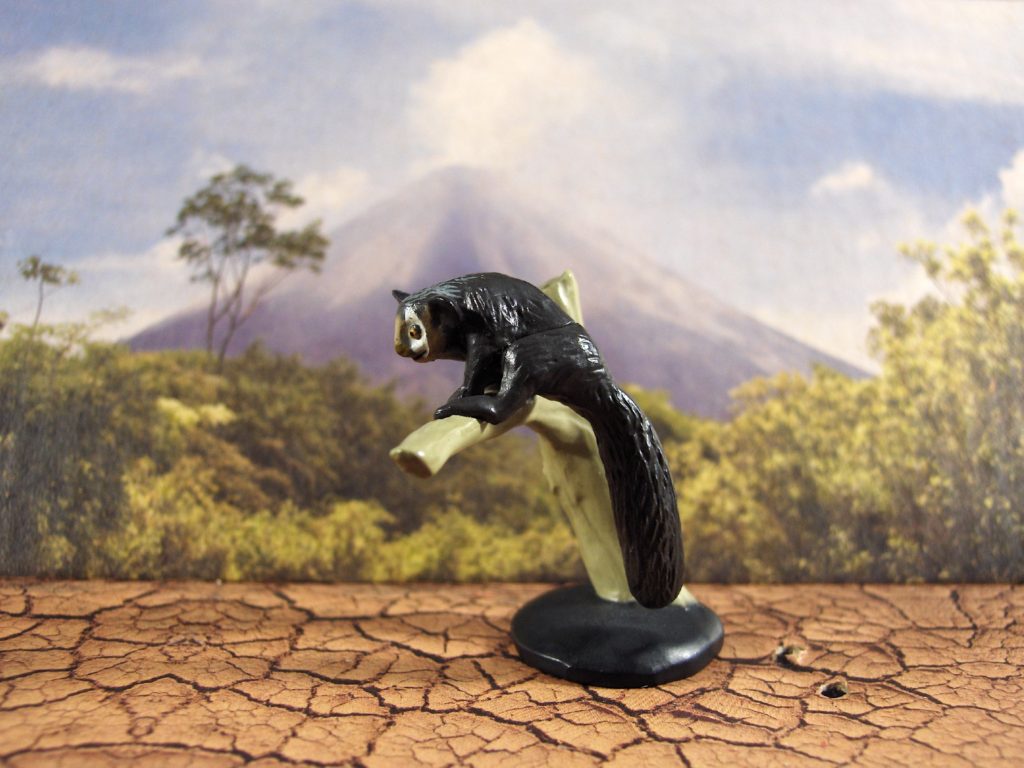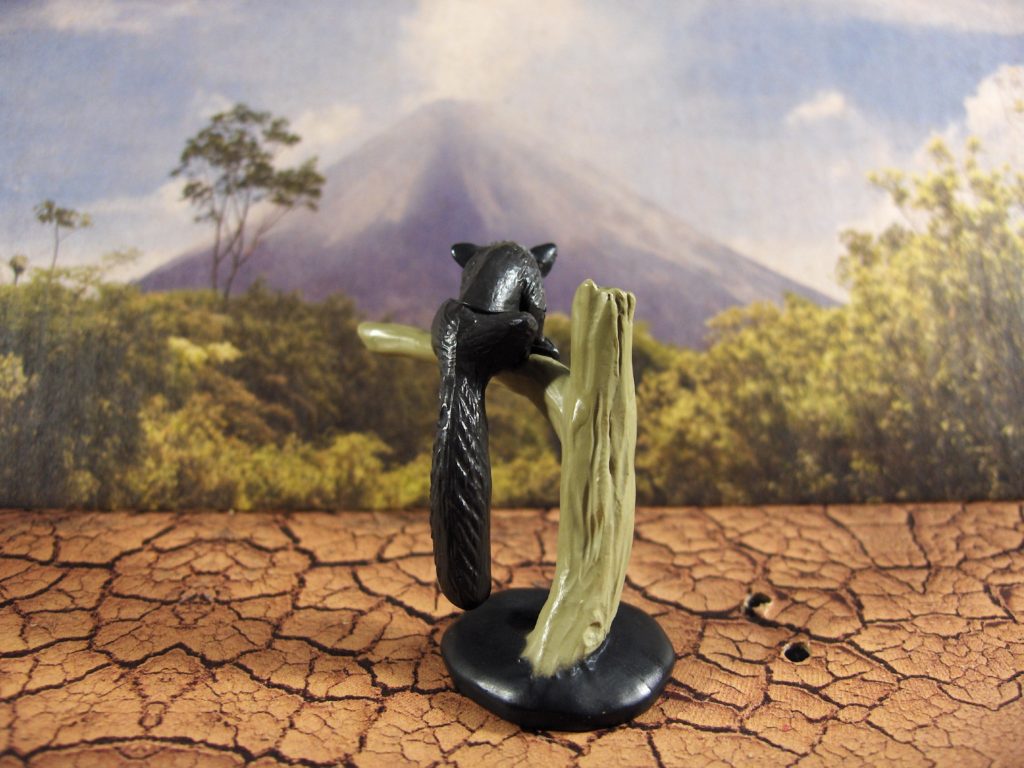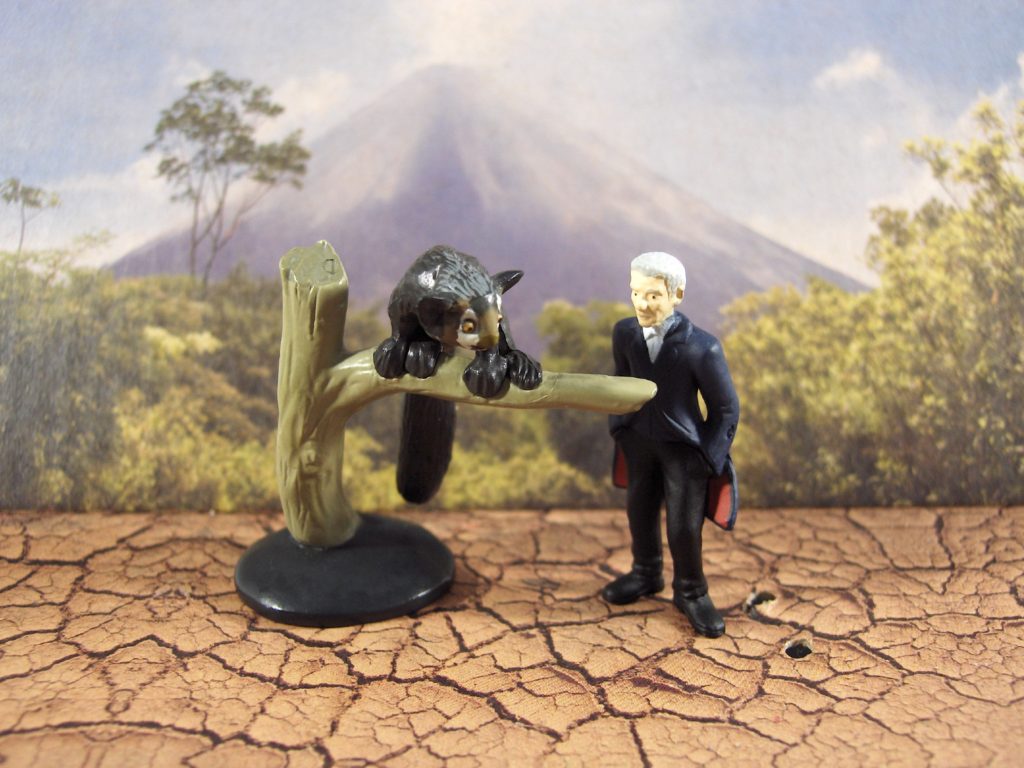This time around I’m going to introduce what I think is the first primate to the blog…and what could be more appropriate than one of the more primitive modern primates, a strepsirrhine, a lemur to be exact? Specifically, the aye-aye Daubentonia madagascariensis Gmelin 1788. So, also one of the weirdest primates as well, and an endangered on as well (on an island of full weird and endangered organisms).

First, a few words about aye-ayes. As mentioned, it is one of about one hundred species of lemur, a group entirely endemic to the island of Madagascar. As far as living primates, they are among the more primitive, sharing characteristics with primate ancestors that differentiate them from more ‘advanced’ primates (haplorrhines). This includes a postorbital bar on the skull, but no post-orbital closure, a soft and touch-sensitive nose (like on a dog), a greater use of smell, more mobile ears, etc. Of course, being isolated on a single island like Madagascar has allowed lemurs to evolve and adapt numerous morhpologies and appearances, and none stand out like the aye-aye.

Aye-ayes are known for their bizarre appearance (relative to other lemurs) and adaptations for nocturnal activity. They have big, forward-facing eyes and large ears lined with ridges which allows better detection of prey under bark. What truly stands out is their hands–the third finger is skinnier than the rest, and functions to tap on trees to detect insect larvae; the same third finger is substantially longer than the other fingers and is used to dig out the prey. Aye-ayes are sometimes suggested to parallel the niche of birds like woodpeckers in the way they seek out prey under the bark and then dig them out. They just use their fingers to do it. Unfortunately, this weird appearance has led some local on Madagascar to fear or hate them as bad omens–killing them on sight to ward off spirits. Between this, habitat loss, and other human activity, the aye-aye (like, again, much of Madagascar’s fauna) is endangered.

So, what is this figure? Well, Colorata figures have been discussed before on the blog, but may have given the impression that they only make weird fish. In fact, Colorata has made dozens of sets, all contained in plastic lunchbox-like containers, with themes of a huge variety of living and fossil animals. This aye-aye figure is from a special one though, an early set made exclusively for the Ueno Zoo in Taito, Tokyo, Japan. The set features (or is it featured? It’s unclear) a number of animals that are present (and popular) from the zoo. The set came out in 2004 and I think is one of their earliest sets (I’ll get to the earliest set soon enough…spooky foreshadowing!) It is still only sold in the Ueno Zoo although other zoo-type sets have come out–and of course, through auctions and resellers! Of the Colorata boxes it is one of the hardest to find.

And now that I have discussed lemurs, aye-ayes and Colorata boxes I can speak to the aye-aye figure. Overall, it’s not bad, if almost a little too smooth (look up online images, they often have a wild look to them). The figure is roughly 5.7cm along the dorsal midline, so assuming roughly 1 metre IRL, the model is about 1:17 scale. It is made of the same slightly flexible PVC found in all Colorata models. The aye-aye figure is produced as a single piece permanently seated on a branch, which is itself simply an extension of a plain brown base. In future, Colorata would become much more invested in their bases (usually). The overall colour of the body and tail is dark chocolate, highlighted at the nape with grey. The face has a grey mask and brown highlights, and brighter orange yes. The tail is sculpted to look suitably bushy, with finer fur detail in particular around the shoulders and legs. Two things, however, stand out. One, as seen in the photo above, is an obvious seam joining the top and bottom of the body. Second, and this is more in line with people’s interest in accuracy…the fingers. The fingers are sculpted in such as way as to look like generic hands. Not only are the unique third and fourth fingers not differentiated, but the entire hands are sculpted in a very ‘thick’ way, instead of the distinct long, almost spidery-hands that literally characterize the aye-aye.

Despite that, the aye-aye (and the pygmy hippo, and the okapi) have made the Ueno Zoo set one to track down, because there are only two models (the other, from Play Visions, is harder to find) and it’s just such a unique animal that any collection is more complete for having one. They are often thought of as ‘collectors’ sets, but Colorata figures are great in that their material is tough and not likely to break (not impossible…nothing is impossible). I would therefore also suggest that they’d be great for older kids to expand their toy boxes as well…but yes, mind the cost. They’re still not easy to find. Maybe just share occasionally, but keep them on display most of the time!?
Disclaimer: links to Ebay and Amazon on the AnimalToyBlog are affiliate links, so we make a small commission if you use them. Thanks for supporting us!




It’s a nice figure but definitely needing an updated version.
Maybe CollectA will make one, after all it’s up their alley in terms of weirdness and rarity.
That’s the dream. It really seems like something they would do. Or maybe a lemur/malagasy tube set?
I would like to know if anyone is still selling this? Please contact me with information!